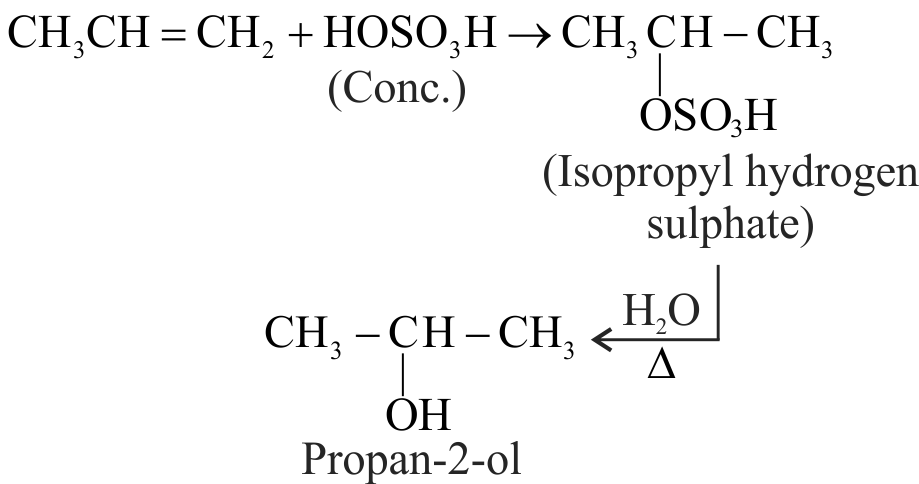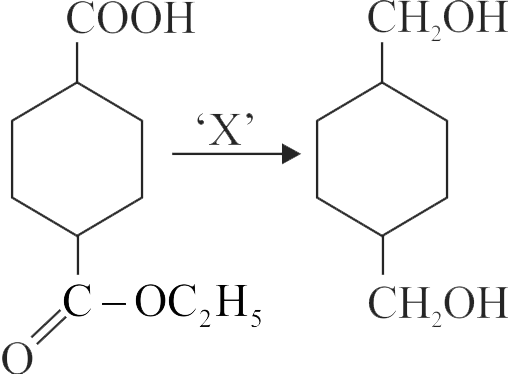322894
The acid catalysed hydration of alkene involves the following three steps.
I. Nucleophilic attack of water on carbocation.
II. Protonation of alkene to form carbocation by the electrophilic attack of
III. Deprotonation to form an alcohol.
Identify the sequence for the mechanism of reation in the acid catalysed hydration of alkenes.
322894
The acid catalysed hydration of alkene involves the following three steps.
I. Nucleophilic attack of water on carbocation.
II. Protonation of alkene to form carbocation by the electrophilic attack of
III. Deprotonation to form an alcohol.
Identify the sequence for the mechanism of reation in the acid catalysed hydration of alkenes.
322894
The acid catalysed hydration of alkene involves the following three steps.
I. Nucleophilic attack of water on carbocation.
II. Protonation of alkene to form carbocation by the electrophilic attack of
III. Deprotonation to form an alcohol.
Identify the sequence for the mechanism of reation in the acid catalysed hydration of alkenes.
322894
The acid catalysed hydration of alkene involves the following three steps.
I. Nucleophilic attack of water on carbocation.
II. Protonation of alkene to form carbocation by the electrophilic attack of
III. Deprotonation to form an alcohol.
Identify the sequence for the mechanism of reation in the acid catalysed hydration of alkenes.
322894
The acid catalysed hydration of alkene involves the following three steps.
I. Nucleophilic attack of water on carbocation.
II. Protonation of alkene to form carbocation by the electrophilic attack of
III. Deprotonation to form an alcohol.
Identify the sequence for the mechanism of reation in the acid catalysed hydration of alkenes.






